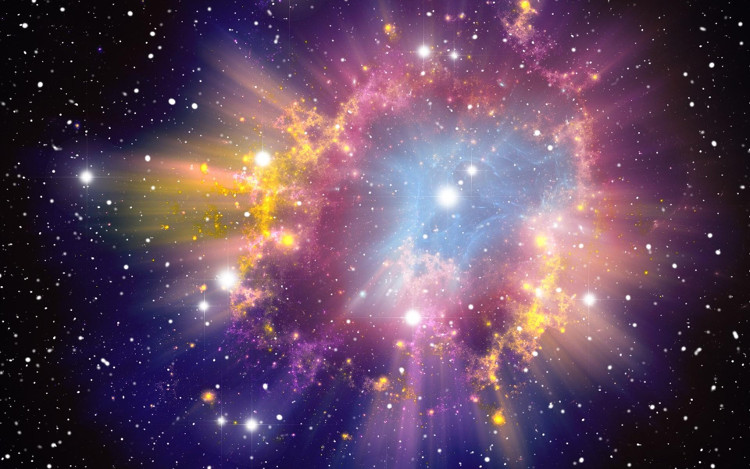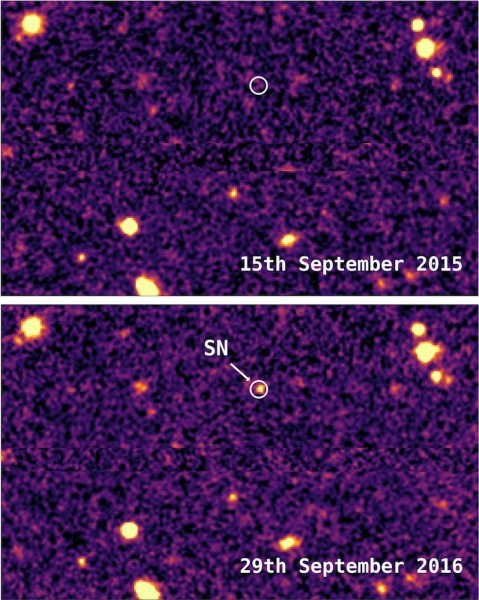The supernova explosion is 10.5 billion light-years away from Earth
The super-bright supernova explosion called DES16C2nm is the farthest explosion that scientists have ever observed in the universe.
Scientists from the Astronomical Research Organization Dark Energy Survey (DES) publish images of the super-bright supernova explosion named DES16C2nm , 10.5 billion light-years from Earth, Space on February 21 reported. This is the farthest explosion that scientists observe in space.

The discovery of the DES16C2nm explosion is of great significance to astronomers.(Photo: Daily Galaxy).
Astronomers first discovered super-bright supernova explosions about a decade ago. The super-bright supernova explosion appears often due to a particularly large star collapsing into the final stages of life.
, the explosion is believed to be the origin of the universe, occurring about 13.8 billion years ago. This means that light from the DES16C2nm explosion has spread in space for about three quarters of the time the universe existed.
Scientists at DES first discovered the DES16C2nm explosion in August 2016. About two months later, astronomers used Very Large telescopes in Chile and the Magellan telescope of Keck Observatory, Hawaii, confirming the brightness and distance of the explosion.
"It's great to be part of a study that helped discover the oldest supernova explosion ever recorded. DES16C2nm is very far, very bright and very rare," Mathew Smith, an expert at the University of Southampton, study author shared.

The dark area in the universe (above) appears light created by the DES16C2nm explosion (below).(Photo: Space).
The observation of DES16C2nm is of great value."Ultraviolet light from the super-bright supernova explosion tells us how much metal is produced and the temperature of the explosion. Both are key elements to understand the causes of explosions in the universe. " Smith added.
Scientists at DES will continue to search and study further phenomena in space, according to research co-author Mark Sullivan. Therefore, the DES16C2nm explosion may not hold a record for too long.
- Create supernova explosions in the laboratory
- The supernova explosion is 55 million light-years from Earth
- Earth used to catch supernova dust
- Build 3D core map of a supernova
- Photographing the star explosion 12 billion light years from Earth
- The supernova explosion can destroy Earth from 50 light years
- The light of the supernova explosion SN 1987A continued to shine
- NASA first recorded a giant red star explosion
- Core Earth originated from supernova?
- The lonely death of a star
- Supernovae can cause extinction 2.5 million years ago
- Spectacular supernova explosions in the universe
 Van Allen's belt and evidence that the Apollo 11 mission to the Moon was myth
Van Allen's belt and evidence that the Apollo 11 mission to the Moon was myth The levels of civilization in the universe (Kardashev scale)
The levels of civilization in the universe (Kardashev scale) Today Mars, the sun and the Earth are aligned
Today Mars, the sun and the Earth are aligned The Amazon owner announced a secret plan to build a space base for thousands of people
The Amazon owner announced a secret plan to build a space base for thousands of people